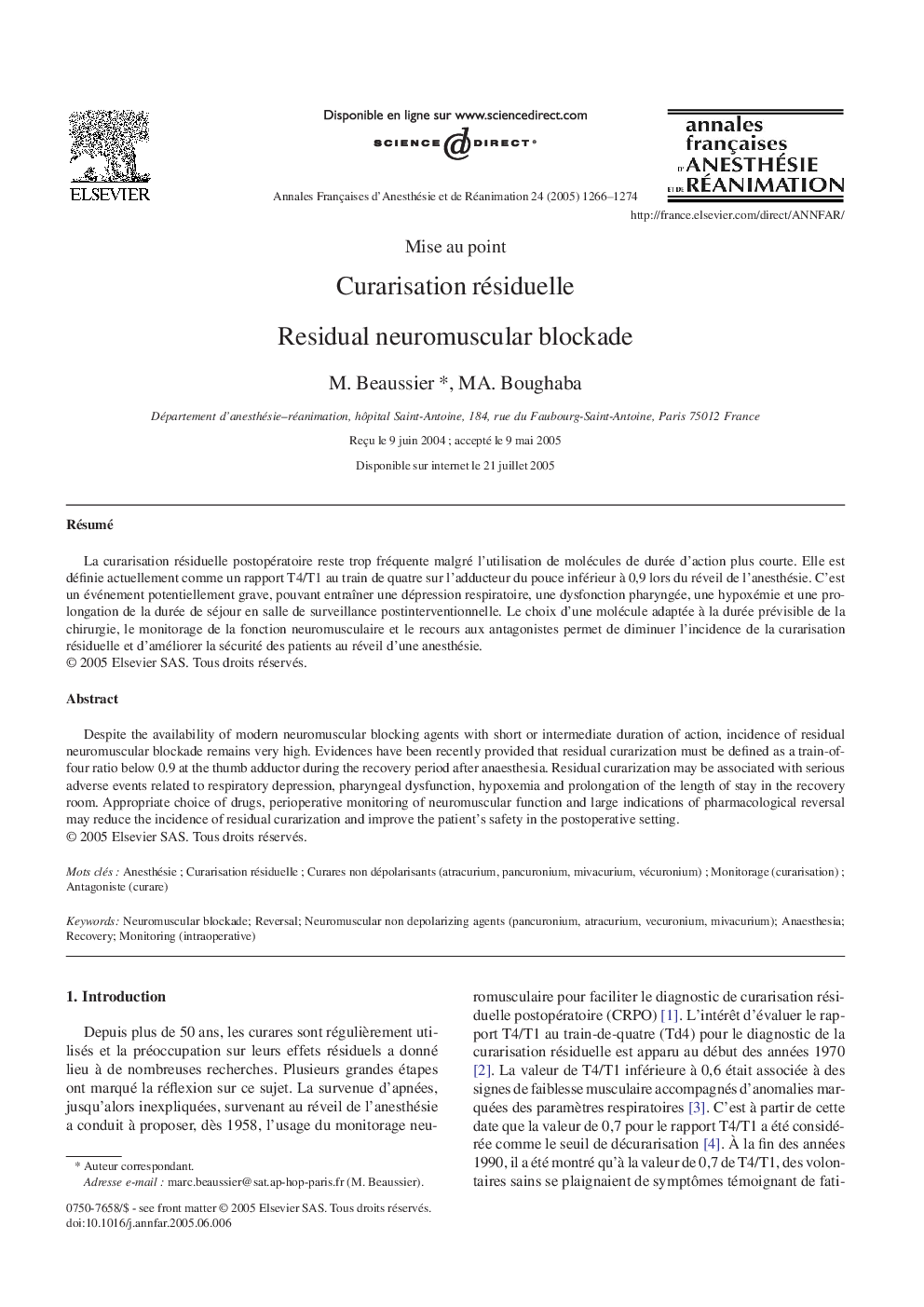| Article ID | Journal | Published Year | Pages | File Type |
|---|---|---|---|---|
| 9090910 | Annales Françaises d'Anesthésie et de Réanimation | 2005 | 9 Pages |
Abstract
Despite the availability of modern neuromuscular blocking agents with short or intermediate duration of action, incidence of residual neuromuscular blockade remains very high. Evidences have been recently provided that residual curarization must be defined as a train-of-four ratio below 0.9 at the thumb adductor during the recovery period after anaesthesia. Residual curarization may be associated with serious adverse events related to respiratory depression, pharyngeal dysfunction, hypoxemia and prolongation of the length of stay in the recovery room. Appropriate choice of drugs, perioperative monitoring of neuromuscular function and large indications of pharmacological reversal may reduce the incidence of residual curarization and improve the patient's safety in the postoperative setting.
Related Topics
Health Sciences
Medicine and Dentistry
Anesthesiology and Pain Medicine
Authors
M. Beaussier, MA. Boughaba,
